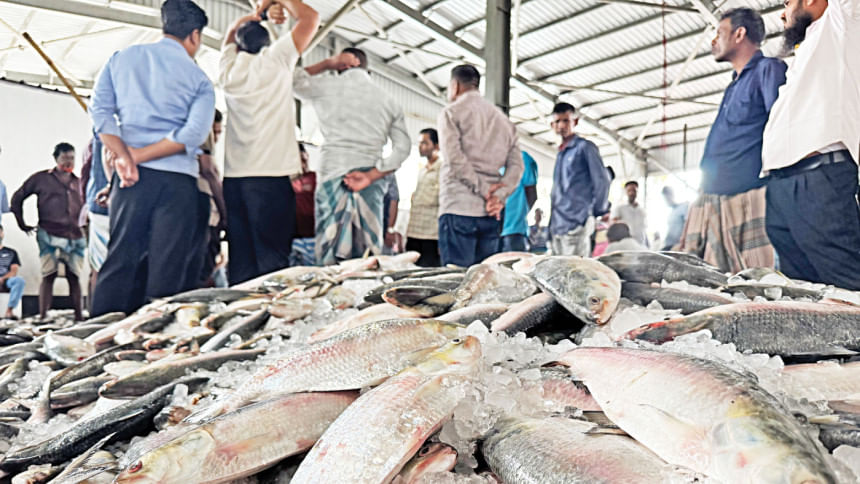Why hilsa prices soar despite ample catches

A market system requiring trade at multiple tiers and advance loans taken from informal sources by fishermen are the main causes of abnormal price hikes of hilsa in the domestic markets, even though adequate amounts are caught each year, according to a survey.
Local businesspeople who provide the credit set the minimum prices at fish landing stations.
From that point, the price continues to rise, starting from bidding by traders seeking to make wholesale purchases, according to the survey on the marketing process conducted by the Bangladesh Trade and Tariff Commission (BTTC).
The hilsa changes hands at least six times before reaching consumers, and at every stage the price increases by around 60 percent, said the survey published on September 25.
Ultimately, consumers bear the higher prices, while the fishermen are deprived.
The price of the national fish of Bangladesh rose by 57.14 percent over the last five years, the survey also said.
For instance, the lowest price of a hilsa was Tk 600 in June this year. Although it declined a bit in July and August, it rose by 50 percent in September to reach Tk 900.
The highest price was Tk 2,000 in July and August, when market supplies were aplenty. Yet in September it edged up to Tk 2,200.
The lowest and highest prices were Tk 900 and Tk 1,400 in fiscal year 2020-21, Tk 600 and Tk 1,400 in fiscal year 2021-22, Tk 600 and Tk 1,300 in fiscal year 2022-23, and Tk 700 and Tk 1,600 in fiscal year 2023-24.
The initial cost of making the catch includes rent for boats and nets and the purchase of fuel. In the second phase, the expenditures are for marketing and storage.
Another major cause of the price hikes is an artificial crisis created by a section of traders who keep the fish in cold storage in order to sell them when market prices rise due to a dearth of supply amid high demand.
The BTTC recommended the formation of an association to reduce the number of middlemen and the elimination of trade at multiple tiers. The commission also suggested an online platform for direct marketing of hilsa in the markets.
In fiscal year 2023-24, fishermen caught 5.29 lakh tonnes of hilsa, down from 5.79 lakh tonnes in fiscal year 2022-23.
They caught 5.67 lakh tonnes in fiscal year 2021-22, 5.65 lakh tonnes in fiscal year 2020-21, and 5.5 lakh tonnes in fiscal year 2019-20.


 For all latest news, follow The Daily Star's Google News channel.
For all latest news, follow The Daily Star's Google News channel. 









Comments